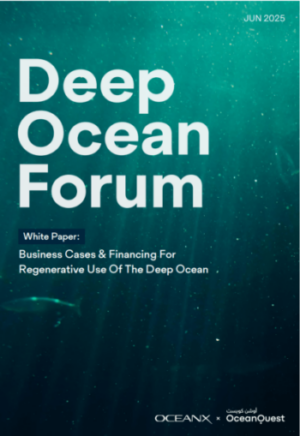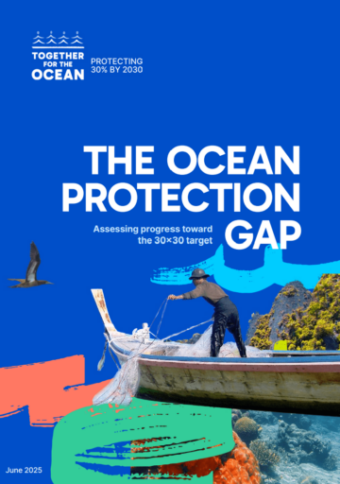The deep ocean is one of Earth’s last frontiers – vast, largely unexplored and full of untapped potential. This report outlines a path to unlock regenerative value from three key industries: marine biotechnology, geothermal and hydrogen energy and marine carbon removal. It also proposes targeted financial tools to bridge funding gaps and make deep ocean innovation truly investable.
The deep ocean, everything below 200 meters, covers over two-thirds of our planet. Yet just 0.001% of its seafloor has been visually explored. It’s one of Earth’s last unknowns. But that’s changing.
A new wave of international agreements, technological progress and rising climate pressure is reshaping how we see the deep ocean. It’s no longer just an extractive frontier. It’s becoming a space where science, business and nations can create long-term value – equitably, responsibly and regeneratively.
This report, co-authored by Systemiq, OceanX and Ocean Quest, explores the deep ocean’s potential, and what it will take to realise it. It focuses on three key frontier industries that could play a pivotal role:
- Marine biotechnology : Already active and growing, this sector turns deep-sea biodiversity into breakthroughs in food, health and materials. But commercial efforts are still disconnected from science. There’s a chance now to build stronger bridges between public research and private innovation.
- Geothermal and geological hydrogen: Still early-stage, these resources could offer reliable, low-emission energy – especially valuable for seabed-rich nations exploring strategic options beyond fossil fuels.
- Marine carbon dioxide removal (mCDR): High-risk, high-reward. mCDR could support global climate targets, but only if we close critical gaps in science and governance.
Despite growing interest, deep ocean innovation lacks the financial tools needed to scale. Private capital sees these sectors as too early, too risky or too fragmented. Public and philanthropic funding is patchy, especially for mid-stage and early commercial projects.
The study proposes three financial instruments to bridge the gap:
- National Nature Capital Funds: Help countries govern marine biodiversity as a national asset, monetise digital sequence data and reinvest in science, infrastructure and fair benefit-sharing.
- Deep Ocean Deep Tech Cluster: A $400–500 million initiative to co-locate labs, capital and testing sites. This would speed up development and de-risk deployment of biotech, sensors and clean energy tools.
- First-of-a-kind Project Finance Facility: Targeted, milestone-based loans to help early pilots in ocean energy cross the commercial “valley of death.”
With the right support, deep ocean development can move from speculative to investable. These tools can help anchor long-term stewardship, build national capacity, and unlock regenerative business models that serve both people and the planet.




